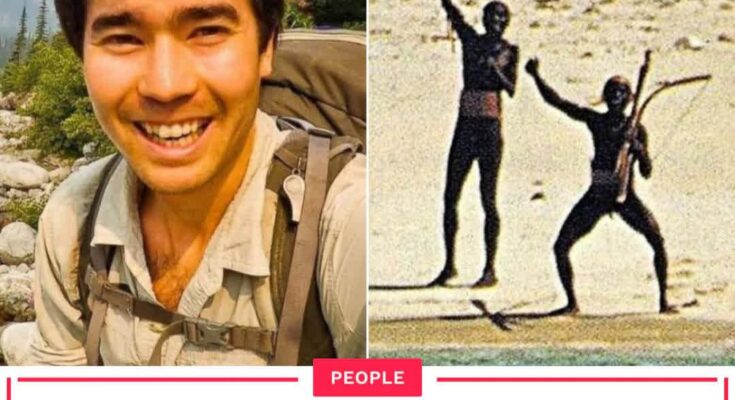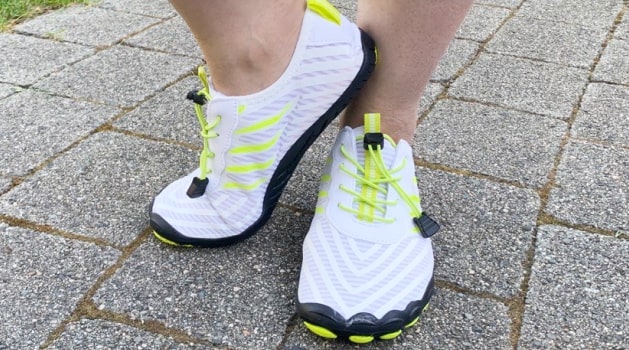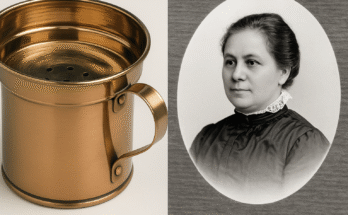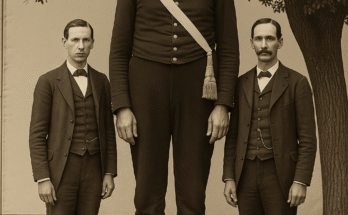John Allen Chau spent years meticulously preparing for a journey to North Sentinel Island, driven by his mission to convert the isolated Sentinelese tribe to Christianity. However, on November 16, 2018, shortly after setting foot on the island, he was killed by the very people he had hoped to reach.
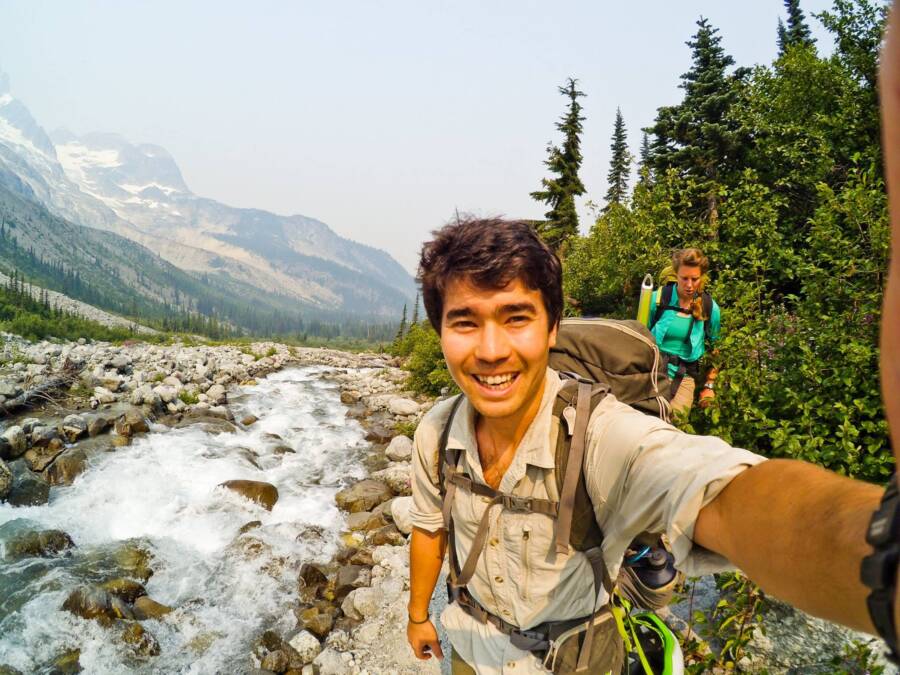
John Allen Chau/FacebookJohn Chau’s body was never recovered, as it was deemed too dangerous by the Indian government.
In 2018, American evangelical missionary John Allen Chau met a tragic end while attempting to make contact with one of the world’s most isolated Indigenous tribes—the Sentinelese of North Sentinel Island.
Driven by a desire to convert the tribe to Christianity, Chau made the dangerous journey despite international laws forbidding contact with the Sentinelese and the well-documented hostility they show to outsiders. A year prior, he had trained with All Nations, a Kansas City-based evangelical organization. Their missionary “boot camp” reportedly included simulations of entering hostile territory, complete with mock native villages and staff posing as spear-wielding locals.
Chau believed North Sentinel Island might be “Satan’s last stronghold on Earth.” Fully aware of the risks, he considered it his divine calling to evangelize the islanders.
His first attempt was met with clear resistance. Fishermen who ferried him close to the island warned him not to proceed, but he pressed on. The Sentinelese reacted with aggression, forcing him to retreat. A few days later, Chau returned and tried again to establish contact. Though the islanders initially seemed curious, they ultimately rejected his offerings—and shot an arrow that pierced the Bible he was holding.
Still undeterred, Chau made one final approach. This time, he did not return. Fishermen later reported seeing the Sentinelese drag his body across the beach, where they buried it the next day.
John Allen Chau: Early Life And Love For Nature
John Allen Chau was born on December 18, 1991, in Scottsboro, Alabama. He was the youngest of three children born to Lynda Adams-Chau, a Chi Alpha missionary organizer, and Patrick Chau, a Chinese-American psychiatrist who immigrated during China’s Cultural Revolution.
Although born in the South, Chau grew up in Vancouver, Washington, where he was surrounded by the lush landscapes of the Pacific Northwest. His love for the outdoors blossomed early, inspired by the adventure books he read as a child.
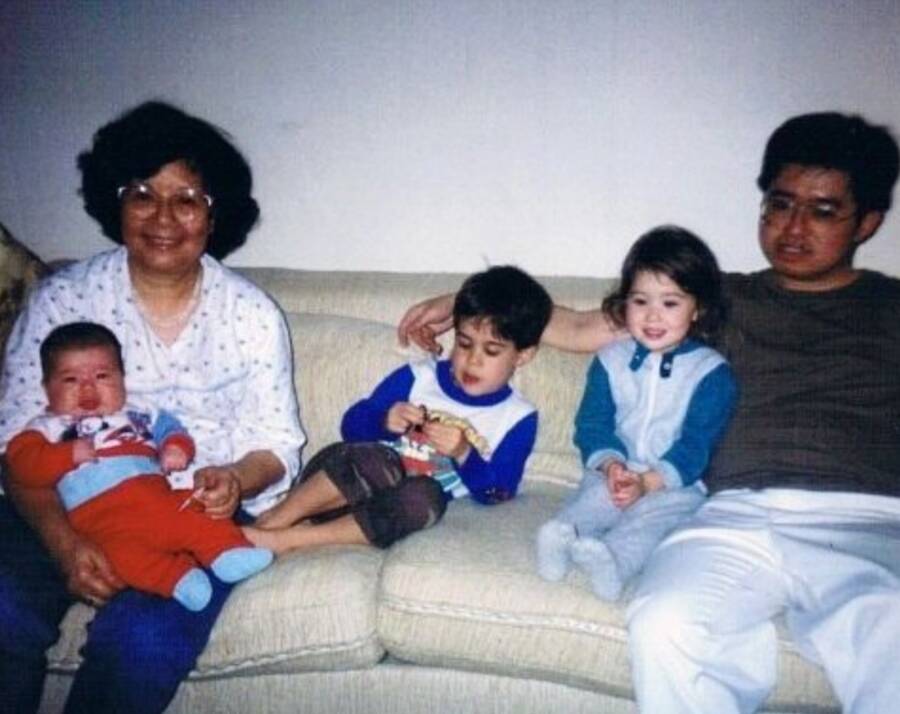
John Allen Chau/InstagramA family picture of the Chau family. John Chau is in the bottom left, being held by his mother. Next to him are his brother, sister, and father.
“Growing up, I remember dusting off a massive tome in my dad’s downstairs study titled Robinson Crusoe,” he said in an interview with The Outbound.
“After struggling my way to read it with early elementary school English, I started reading easier kid-friendly books like Hatchet, My side of the Mountain, and Sign of the Beaver, the latter of which inspired my brother and I to paint our faces with wild blackberry juice and tramp through our backyard with bows and spears we created from sticks. Since then, the outdoors have been my home.”
Even at the time of that interview, in 2015, Chau had expressed interest in traveling to the more isolated islands near India. In response to one question, he mentioned wanting to go to South Africa and India — but cited the Andaman and Nicobar Islands in India as a “must-do adventure.”
But nature was not Chau’s only passion. He grew up in a devoutly Christian home. His family, according to The Guardian, were apparently members of the Assemblies of God, an international Pentecostal church whose members occasionally speak in tongues. Chau also attended Vancouver Christian high school, which had just 90 students across seven grades.
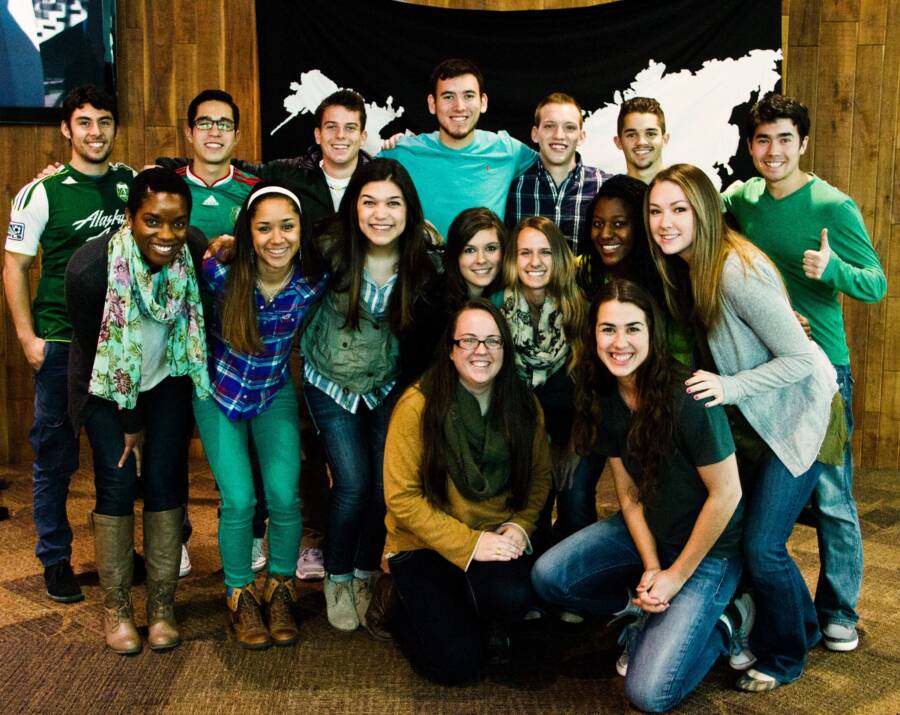
John Allen Chau/FacebookJohn Chau (back right) with fellow missionaries, dubbed “Team South Africa” in his original post.
During his high school years, he went on a mission trip to Mexico that reaffirmed his faith, despite his own father’s disillusionment with it. In an email to The Guardian, Dr. Patrick Chau called religion “the opium of the mass[es],” blaming “Western ideology” and “extreme Christianity” for his son’s ultimate fate.
Dr. Chau’s feelings on religion did not carry over to his son, though. John Chau was fully on board with the idea that the word of God should be spread to all — even the isolated Sentinelese people who, according to the missionary database the Joshua Project, “need to know that the Creator God exists, and that He loves them and paid the price for their sins.”
Unfortunately for Chau, the Sentinelese aren’t exactly known for their welcoming, curious nature.
Who Are The Sentinelese People?
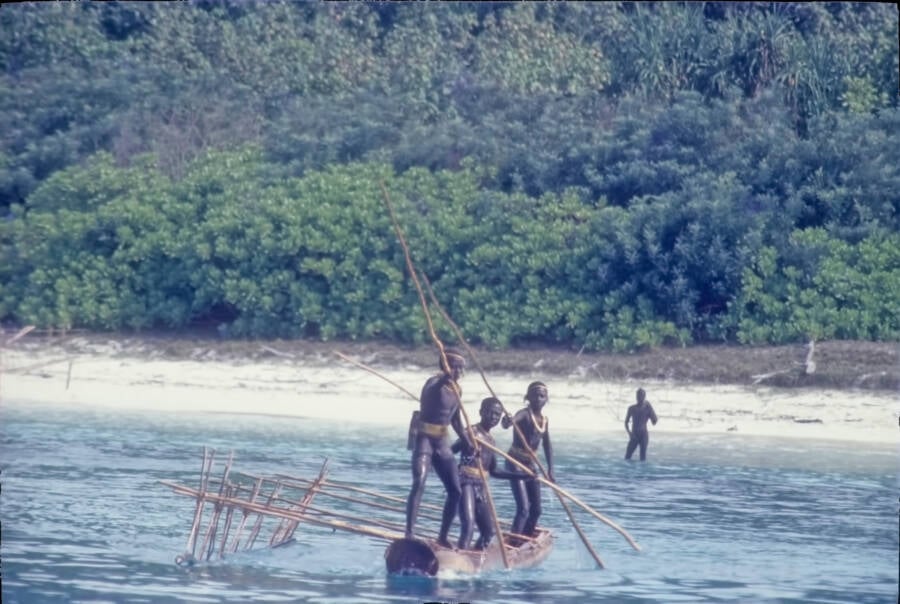
Nutu/Alamy Stock PhotoA group of Sentinelese youth on the island, preparing to drive away the photographer.
The Sentinelese are believed to be direct descendants of the first human populations to migrate out of Africa, possibly settling on North Sentinel Island as long as 60,000 years ago. They are part of the broader group of Andamanese people, which also includes the Great Andamanese, the Jarawas, the Onge, the Shompen, and the Nicobarese.
They are incredibly reclusive and have been designated a particularly vulnerable tribal group, with minimal contact with outsiders. Unfortunately, the Sentinelese are also known to have hostile reactions to those who approach or land on the island.
Because of this, very little is actually known about the tribe. Estimates of their population vary wildly, ranging from as few as 15 to as many as 500 individuals. Most commonly, though, the cited range is somewhere between 50 and 150 people.
The Sentinelese are hunter-gatherers who rely on the island’s natural resources, primarily hunting wild pigs and fish and collecting fruits and honey. They typically hunt with bows and arrows, with tools often made from materials found on the island or salvaged from nearby shipwrecks. Curiously, while they are known to use fire, there is actually no evidence that they know how to produce it, meaning they likely preserve embers from natural sources instead.
Due to their isolation and the mysteries surrounding their culture and way of life, widespread fascination has developed around the Sentinelese. Their language is unclassified, and their beliefs and social structures are largely unknown.
John Chau knew about as much as anyone else about the Sentinelese, including how dangerous it was to visit their island. Still, he felt compelled by a higher power — or, at least, his faith in one — to travel to North Sentinel Island and deliver Christianity unto the tribe.
John Allen Chau’s Fateful Journey To North Sentinel Island
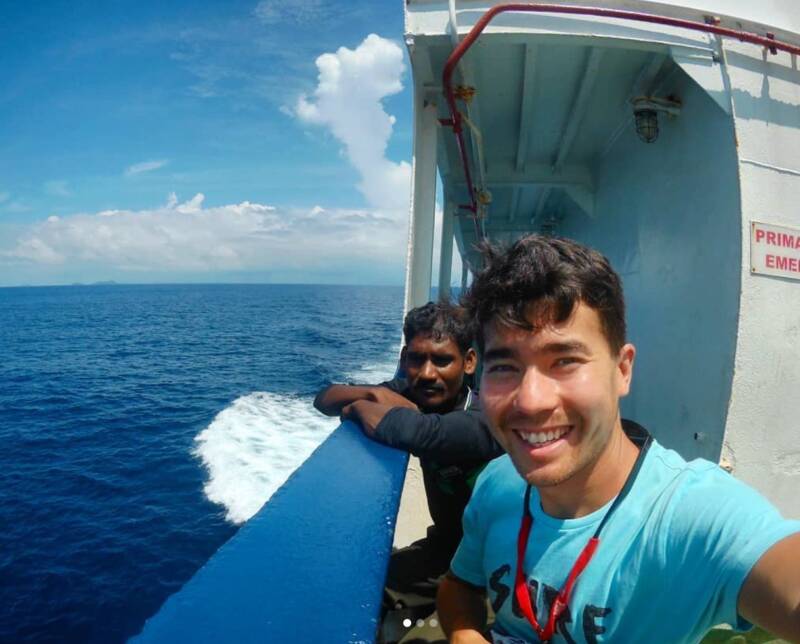
John Allen Chau/InstagramJohn Chau in the tropics.
Between 2015 and 2016, Chau took four trips to the Andaman Islands, where he made several contacts in the local Christian community. At the time, he had not visited North Sentinel.
But when he returned to the U.S. in 2017, he was accepted to a boot camp run by All Nations International. The Kansas City-based organization, which later touted John Chau as a martyr in 2022, had the express goal of trying to ensure that Jesus was “worshipped by every tongue, tribe, and nation.” To help missionaries prepare to spread the Lord’s message, they conducted mock village and role-play scenarios to help trainees get a feel for the situations they might find themselves in.
According to Mary Ho, All Nations’ leader, John Chau was one of the best trainees the program had ever seen.
“We are honored to have shared John’s unique missions journey,” Ho later said. “His God-given calling to reach the Sentinelese people was an unusual one. John believed he was joining God’s mission to share His love with them… Still today, no one from the outside has learned the way they speak or think. Yet, John went, carrying no weapon, only a Bible and fish, gifts they would recognize.”
Chau also kept a diary of his last trip, which shows just how earnest he was in his attempt. He underwent a self-imposed 11-day quarantine to avoid accidentally infecting the Sentinelese with any disease they have never been exposed to. He studied the accounts of other missionaries who met with isolated tribes.
But perhaps Chau should have also read the story of Michael Rockefeller and the grisly fate he met when he attempted to make contact with the Asmat tribe. It might have served as a warning for what was to come.
What Happened To John Chau? Inside His Final Days
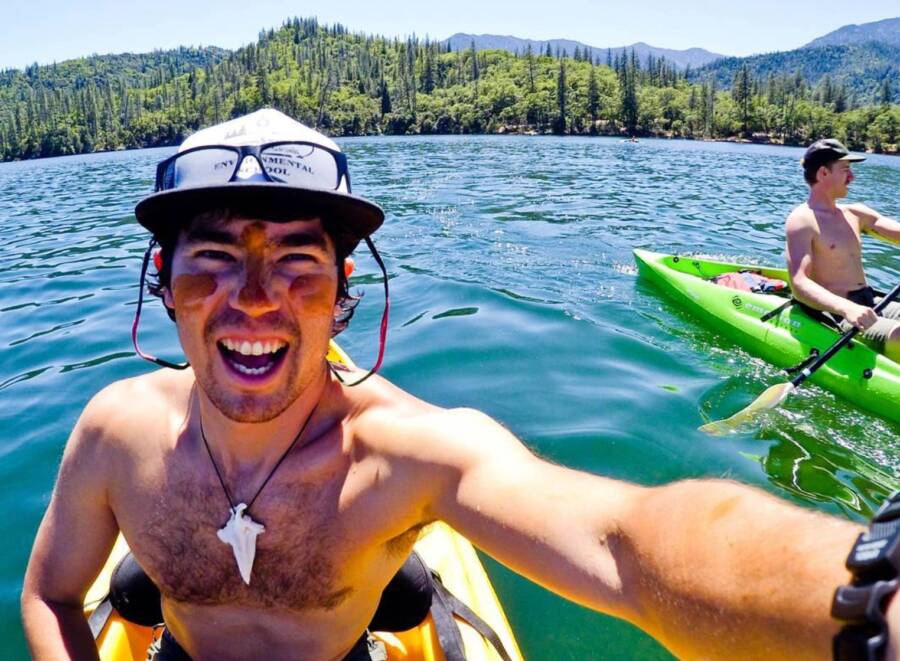
John Chau/InstagramJohn Chau kayaking in the summer of 2017.
In November 2018, John Chau asked some fishermen — fellow Christians who offered their help — to take him to North Sentinel. On November 14, they sailed toward the island in the darkness and anchored their boat nearby. The next morning, Chau headed toward the island alone, as the fishermen refused to approach it. Chau stripped down to his underwear, believing it would put the Sentinelese at ease, and paddled a kayak toward the island, shouting to the tribespeople as he approached, “My name is John. I love you, and Jesus loves you!”
The Sentinelese, in response, began loading their bows. Chau panicked, tossed them some fish he had brought as a gift, and turned away, paddling back to his base camp. He made a second attempt later that same day, brought more gifts with him, and tried to communicate with the Sentinelese by repeating the sounds they were making at him back at them. This made the tribespeople burst into laughter, though they did let him linger for a bit while he sang worship songs and preached from Genesis.
They had clearly tolerated all they could, as a boy then shot an arrow at Chau, which embedded itself in the waterproof Bible he was holding. Chau removed the arrow, handed it back to the boy, and retreated. This time, however, he didn’t have his kayak — the Sentinelese had taken it. Chau had to swim nearly a mile back to the fishing boat. Still, he was determined “to declare Jesus to these people,” as he wrote in a letter to his family.
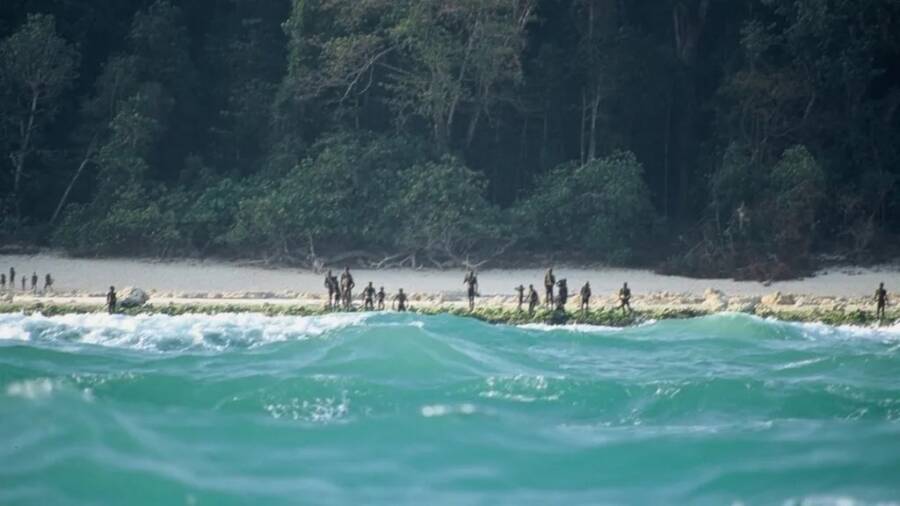
Christian Caron/Creative CommonsSentinelese standing guard on a beach in 2005.
On November 16, Chau made one last attempt. He asked the fishermen to drop him off and take the boat away, hoping that without the boat nearby, the islanders would feel more comfortable. It was a shot in the dark, and Chau knew it. He wrote in his diary, “I think I could be more useful alive, but to you, God, I give all the glory of whatever happens.”
The fishermen didn’t see what happened. Later that day, though, they saw the islanders dragging Chau’s body across the shore before burying it. It wasn’t hard to imagine what happened.
Tragically, John Chau remains buried on that beach to this day. Questions initially arose about bringing his body back home, but according to the BBC, the Indian government determined that it simply wasn’t feasible after trying to scout the island. The rights group Survival International had also advocated for the Indian government to abandon its search.
“The risk of a deadly epidemic of flu, measles or other outside disease is very real, and increases with every contact,” said director Stephen Corry. “Such efforts in similar cases in the past have ended with the Sentinelese attempting to defend their island by force. Mr. Chau’s body should be left alone, as should the Sentinelese.”
After reading about John Allen Chau’s fateful encounter with the Sentinelese people, learn about the Korowai tribe, the isolated Papuan people who live in treehouses — and allegedly engage in cannibalism. Then, learn about Tristan da Cunha, the most isolated inhabited place on planet Earth.
